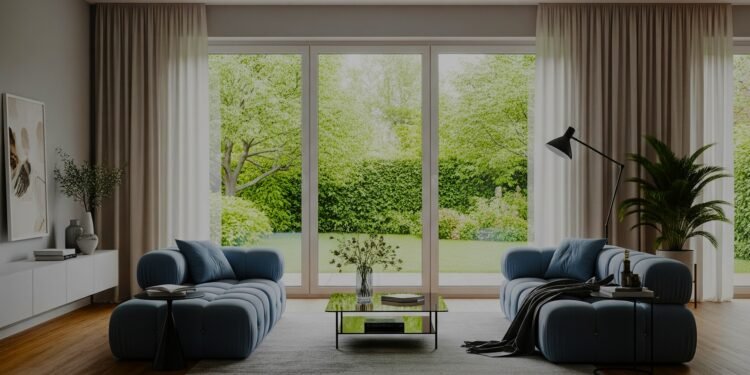Introduction
Window Dressing Patio Doors : You enter your living room and there they are those huge glass patio doors staring right back at you as naked as a jaybird. Perhaps you moved in six months ago and are still “getting around to” window treatments. Or maybe you’ve been forced to look at those terrible vertical blinds from 1987 that came with the house and you finally cracked.
Dressing up patio doors isn’t an all-in, smash-and-grab solution. These are not dorm room windows we are speaking of. Your patio doors are likely the biggest glass feature in your home; you use them all day, every day and, let’s face it, they are probably one of the first things people notice upon entering your main living space.
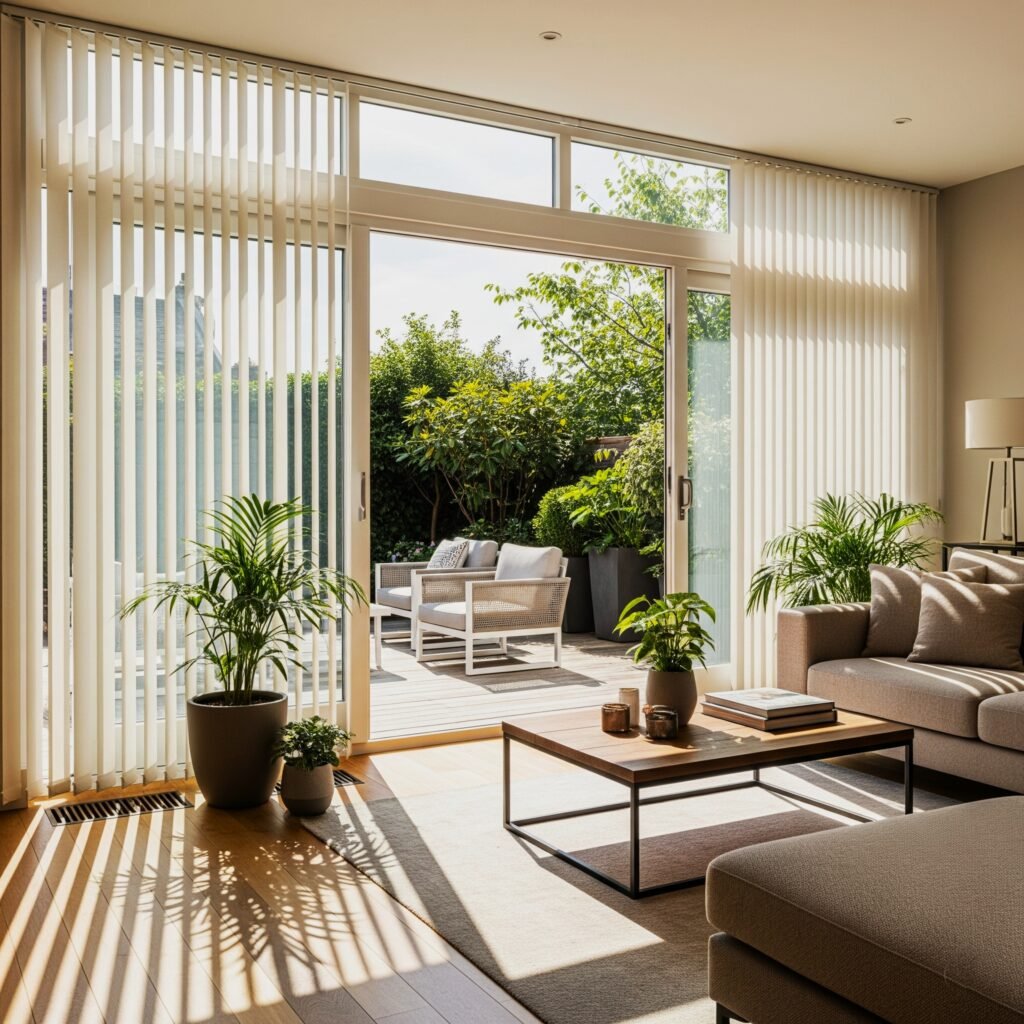
Vertical Blinds: The Classic Choice
“Fine, let’s address the elephant in the room up front. When you think of “vertical blinds,” you probably conjure up an image of those cheap bad boys you had in your college apartment, right — the ones with half the slats snapped off, and that sound like bones breaking every time you drew them open. But let’s face it: When it comes to window dressing patio doors, there’s an entirely new realm of stylish, rugged, and energy-efficient options that won’t make you cringe. So why not upgrade your space now and feel the difference!
1. Traditional Vinyl Vertical Blinds
The thing to know is that vinyl vertical blinds are the Honda Civic of window treatments. No one is thrilled about them, but they do the trick. Day after day, year after year. My neighbour has owned one for 12 years and they are as good as new. The thing that convinced me on decent vinyl blinds was seeing my friend’s kids epically demolish (over years) every other window treatment in their house while these just chugged.
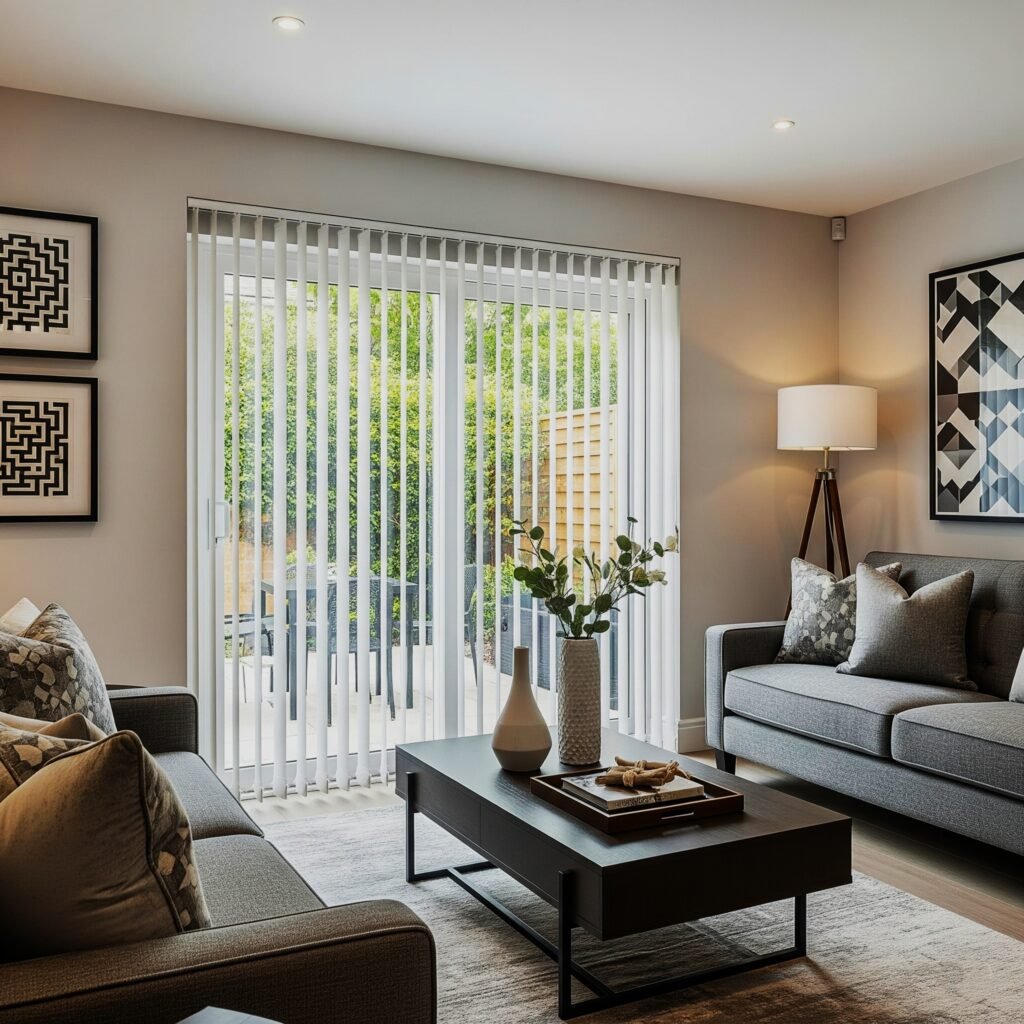
2. Faux Wood Vertical Blinds
Now we’re getting somewhere. It’s when you realize you’re starting to get a little fancy about a window treatment. I actually put these up in my dining room last year and people really do believe that this is real wood until they get up in your face. The wood grain patterns have become downright scary. I’m referring to textures and color variations that stop you in your tracks.

Related : 25 Stunning Door Molding Ideas Love: Transform Your Home
3. Fabric Vertical Blinds
Fabric vertical blinds changed all that for me. I never knew how harsh the light was with my regular blinds until I switched to fabric blinds. It’s like the lighting we had put in our house, the difference between fluorescent and a nice table lamp same amount of light, totally different feel. The light they give off is simply beautiful. Rather than the harsh lines and bright spots you get with hard blinds, fabric scatters it all into a soft, even glow.
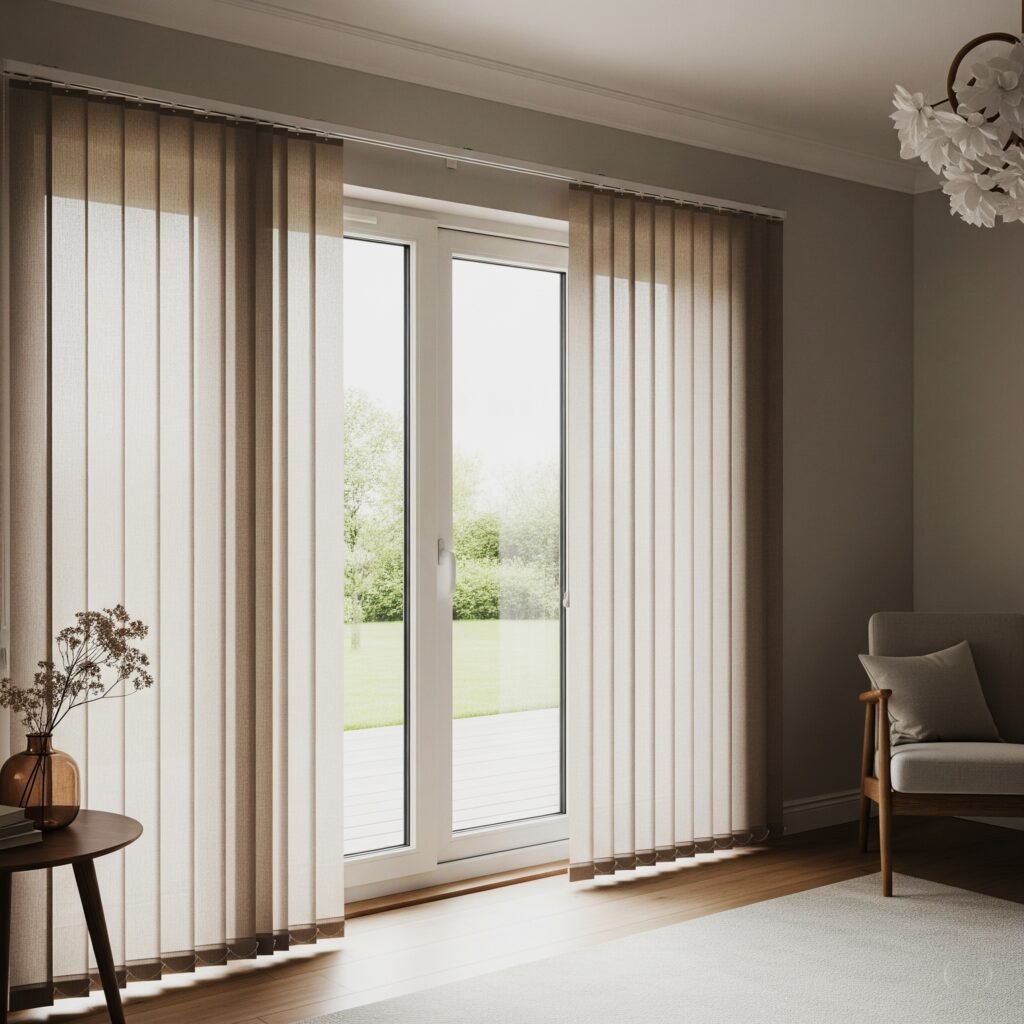
4. Sheer Vertical Blinds
Sheer verticals are the Swiss Army knife of window coverings. They keep you private during the day and your view isn’t totally blocked, they make harsh light look pretty and they just make everything feel a little more elegant without really trying. I was skeptical at first because “sheer” would imply that you could see right into my house at all hours of the day, but SO WEAR AT NIGHT!
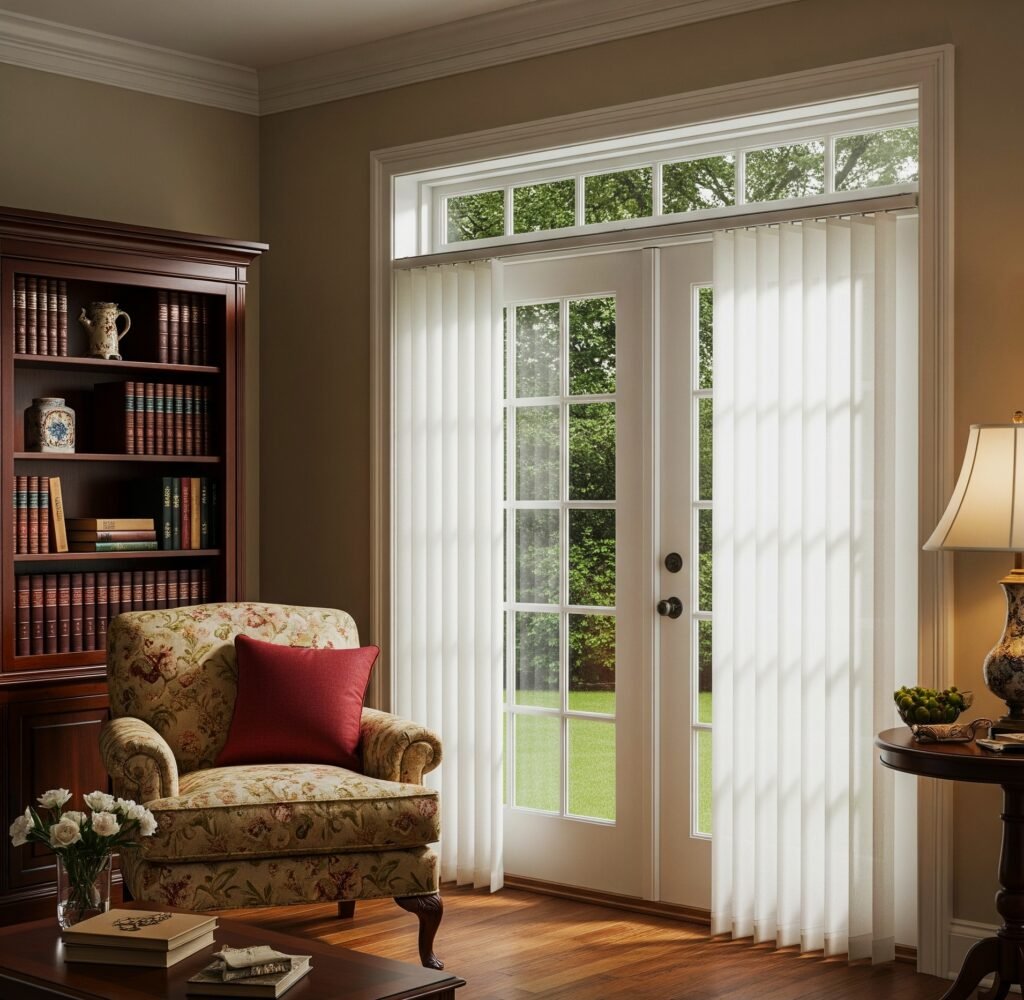
5. Curved Vertical Blinds
I’m sure you’ve heard me go on and on about how much I love (and yes, I know this is so extra) CURVED vertical blinds but they’re one of those things that sounds so gimmicky until you see it in action. The slight S-curve in each slat really does more than you might imagine, in terms of aesthetics and performance. When they’re closed, the curves make this really fascinating visual texture that’s much more grown-up than flat slats.
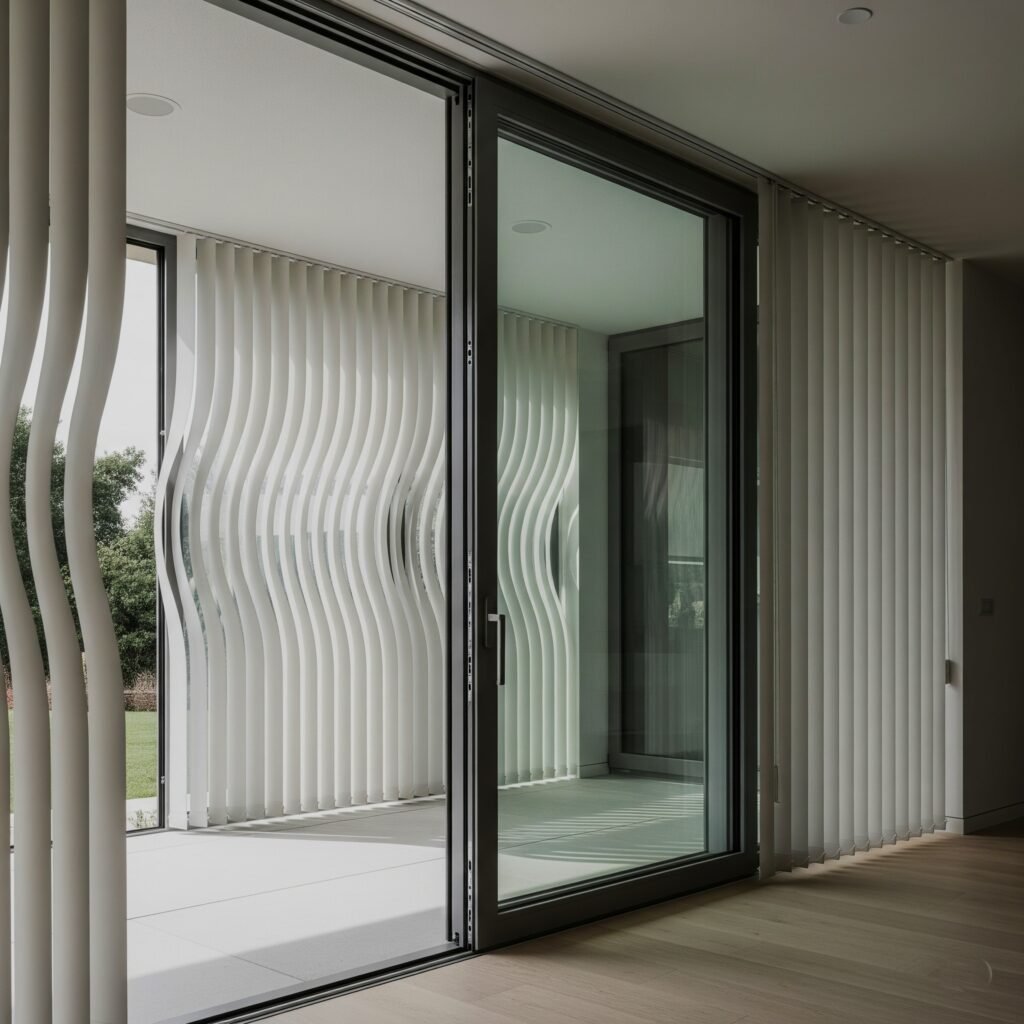
Panel Track Systems: Modern Functionality
Panel track systems are the culmination of the idea of what happens when window dressing patio doors takes a leap into the twenty first century. If vertical blinds are utilitarian and serviceable, then panel tracks are sculptural and architectural.
6. Solar Panel Track Blinds
Solar panel tracks were a revelation for my west-facing living room that became a greenhouse each afternoon. No joke, I could feel the difference in temperature immediately. The fabric tech is really quite cool. You can still see out quite clearly, except that the UV rays and temperature are filtered.
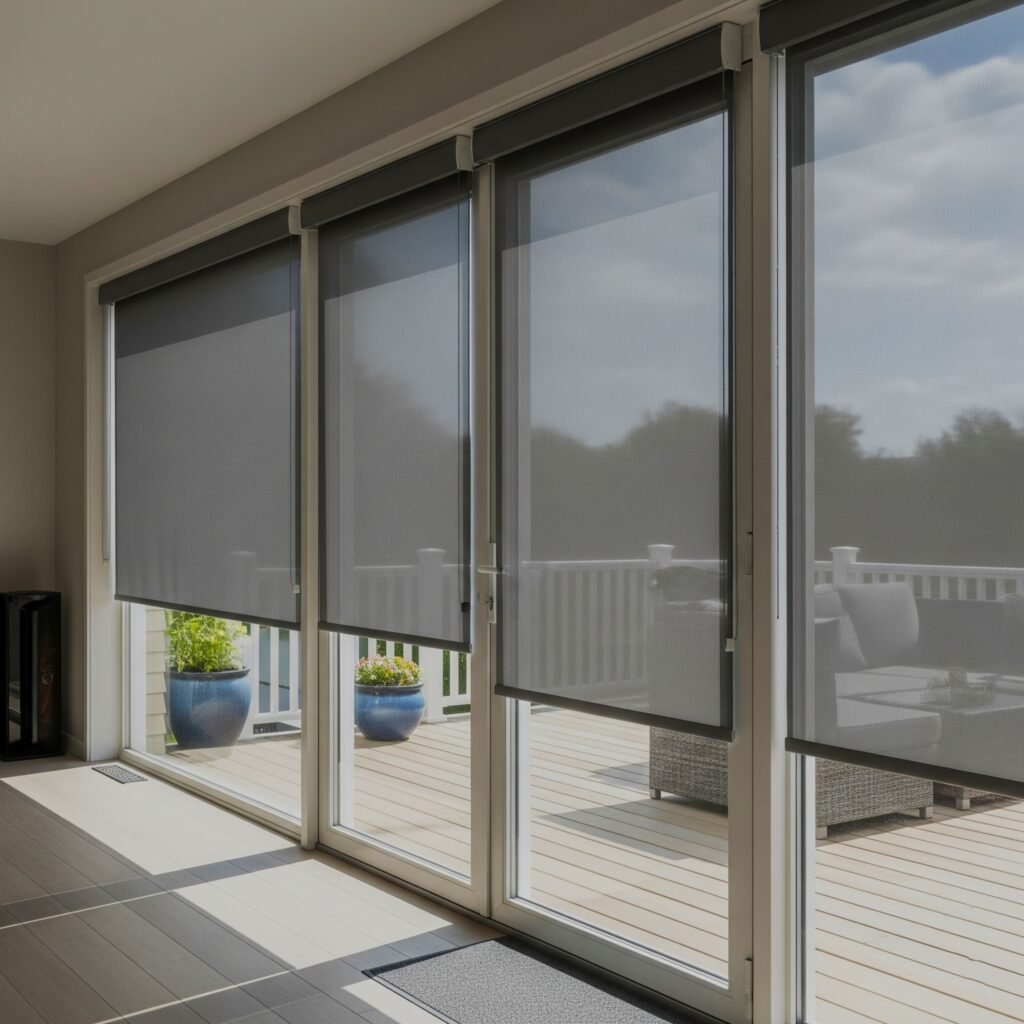
7. Designer Fabric Panel Tracks
Designer fabric panel tracks represent where window treatments meet art. I spent a pretty penny on these for my dining room and they are honestly the focal point of the entire space. My friends and acquaintances comment on them more than my furniture. Picking a fabric is sort of a good kind of overwhelming.”

8. Bamboo Panel Track Shades
Bamboo screens lend that natural, zen vibe, which is great if you’re after something organic or casual. There’s something about the texture and the amount of light filtering through that does make a space feel a bit calmer and invitingly connected to nature. I always feel like these styles of drapery have a way of connecting the indoors with the outdoors.”

9. Blackout Panel Track Systems
Blackout panels are serious business. I mean the sort of darkness that makes you believe your phone has died since you can’t see the time. For bedroom or media rooms where light is the enemy, definitely consider these. Their technology is amazing stuff. Various layers of material, and unique processing to eliminate almost all light, which is not transmitted.
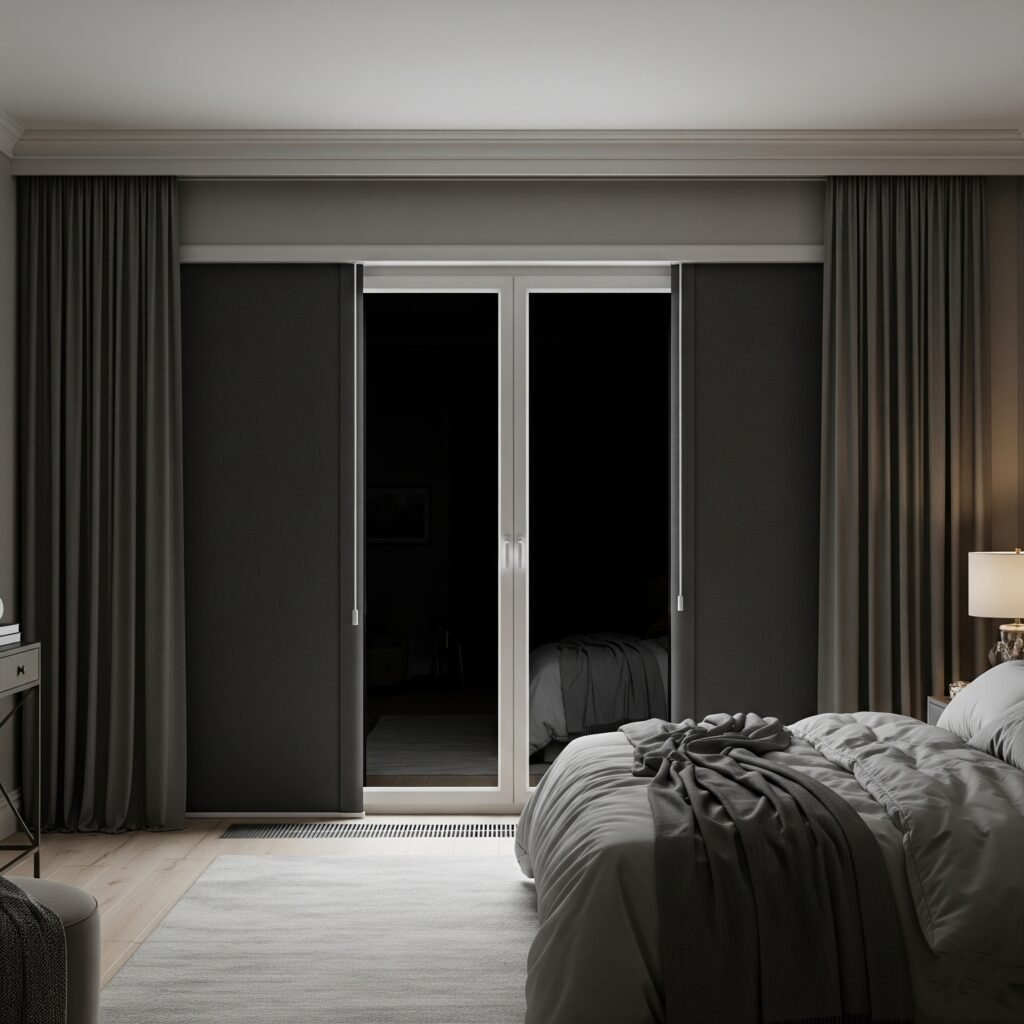
10. Motorized Panel Track Blinds
Motorization may seem a luxury, but for massive or hefty panels, it becomes a practical consideration. I lent a hand installing 12-foot panels for a friend, and there’s no way you’d want to yank those open by hand every day. The motors make it effortless. The technology has only grown more advanced and quieter. These aren’t the noisy, jerky systems of years past.
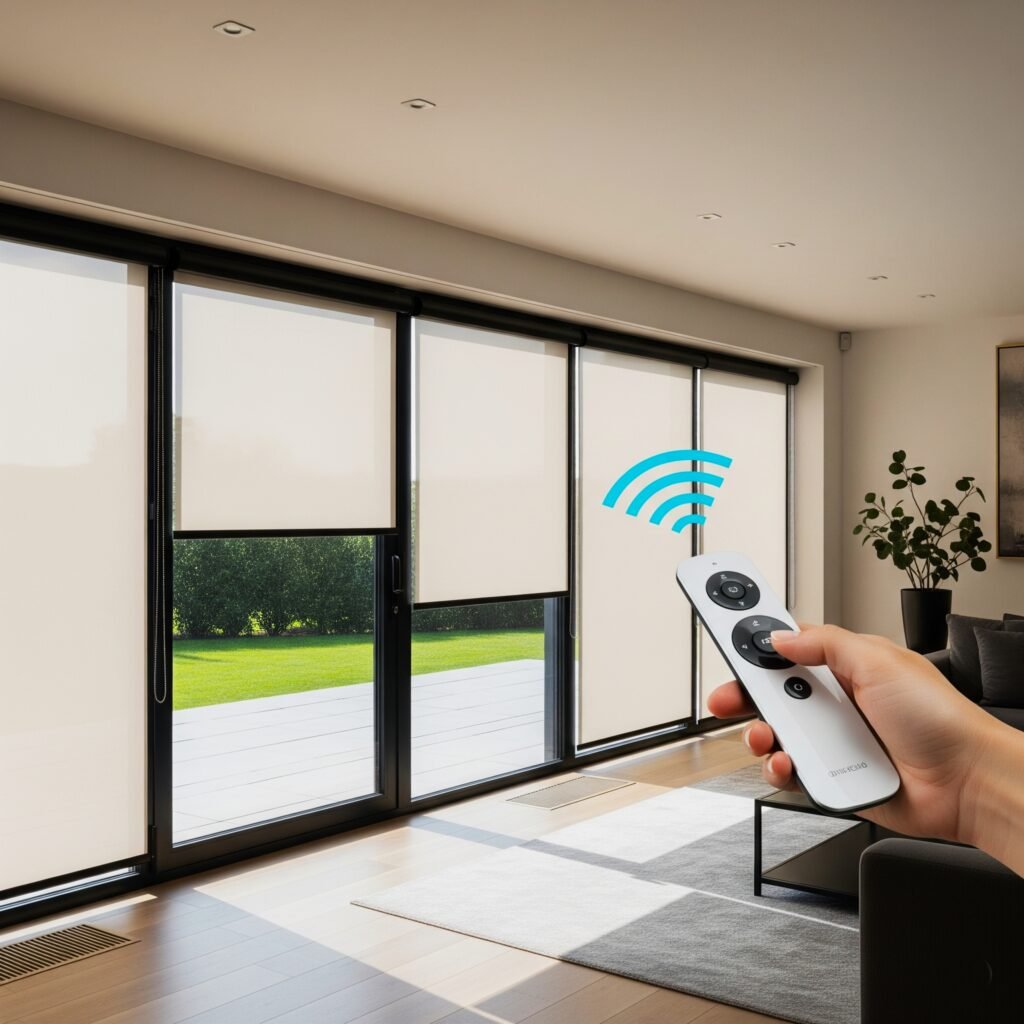
Cellular Shades: Energy Efficiency
If you’re serious about costs and want true change in the temperature of your room (or if you get a chill/sun exposure anyway), window dressing patio doors, such as the cellular shades space within put things right. They can not only give you extra room to hang out, but if you live in a place with dramatic seasons (hot, hot summers, cold, cold winters!), lights might even pay for themselves in energy savings. Be comfortable all year and save money too!
11. Single Cell Honeycomb Shades
Single cell honeycomb shades are like wrapping your doors with a thermal blanket that looks great. “There’s definitely a difference when you’re in a restaurant, but the honeycomb structure does make these little air pockets and it insulates that little bit, and I swear you can feel a difference before the end of the day of putting them up. Here’s the first way these won me over: my electric bill. Not only that, we’re experiencing a significant decline in cooling costs since the first summer with them in place.
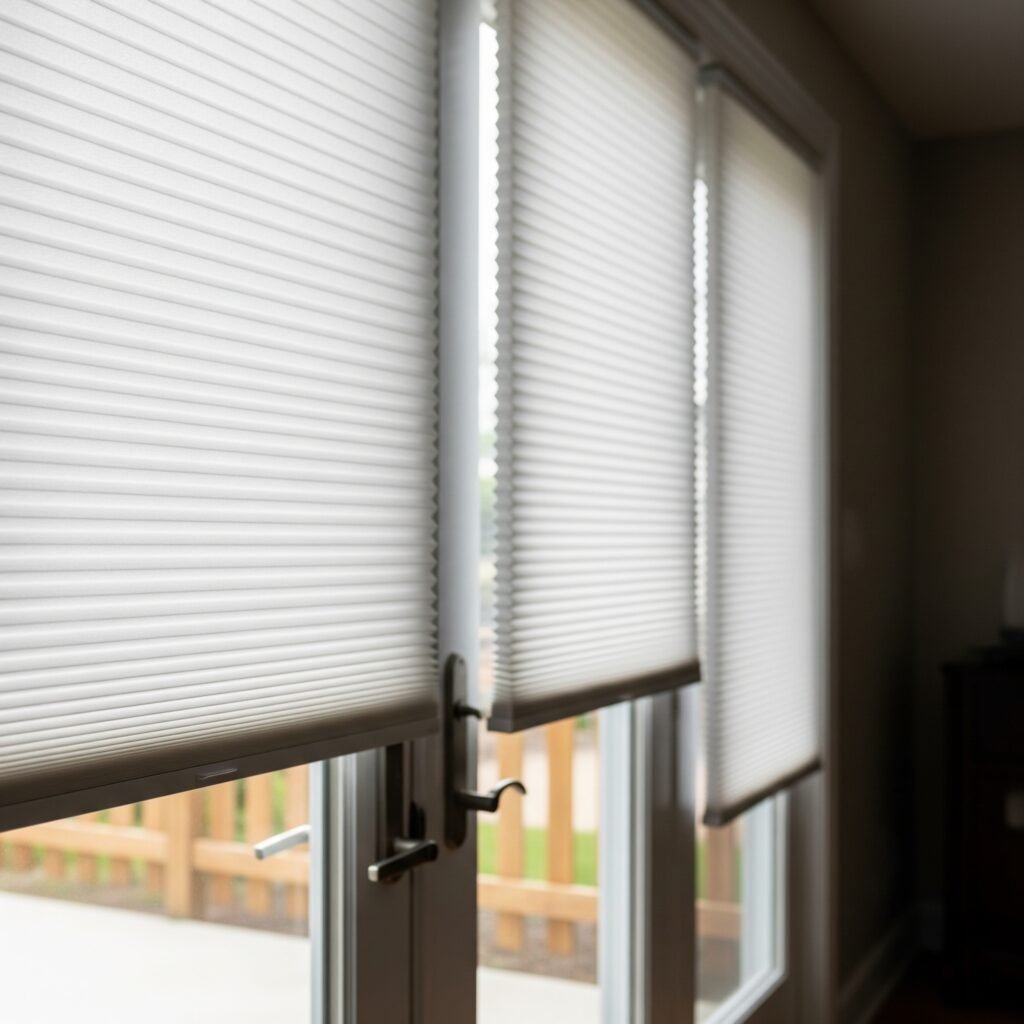
12. Double Cell Honeycomb Shades
Double cell shades are just single cells on steroids. You have honeycomb cells within honeycomb cells, producing that many more air pockets and some hugely impressive thermal performance.” Worth the extra cost for extreme climates for sure. I urged my cousin in Phoenix and brother in Minnesota to acquire these, and both are full of praise at the difference they make.
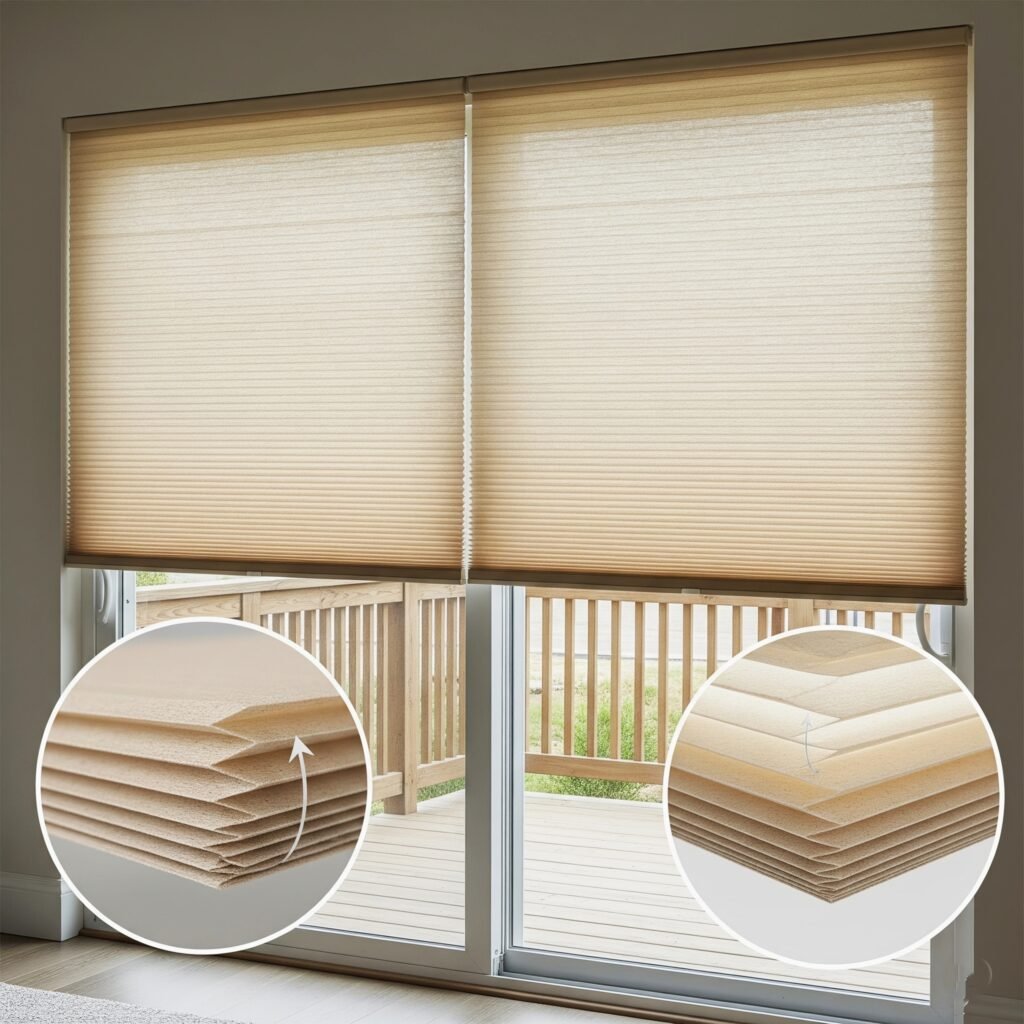
13. Top-Down Bottom-Up Cellular Shades
Top-down, bottom-up operation is one of those features that sounds sexy but that actually solves practical problems. You can pull it down from the top or pull it up from the bottom or even stop it at any spot in between. Its usefulness is truly second to none, once you learn to use it. Case in point: you want all the natural light, but your next door neighbor’s kitchen window directly views into your dining room.
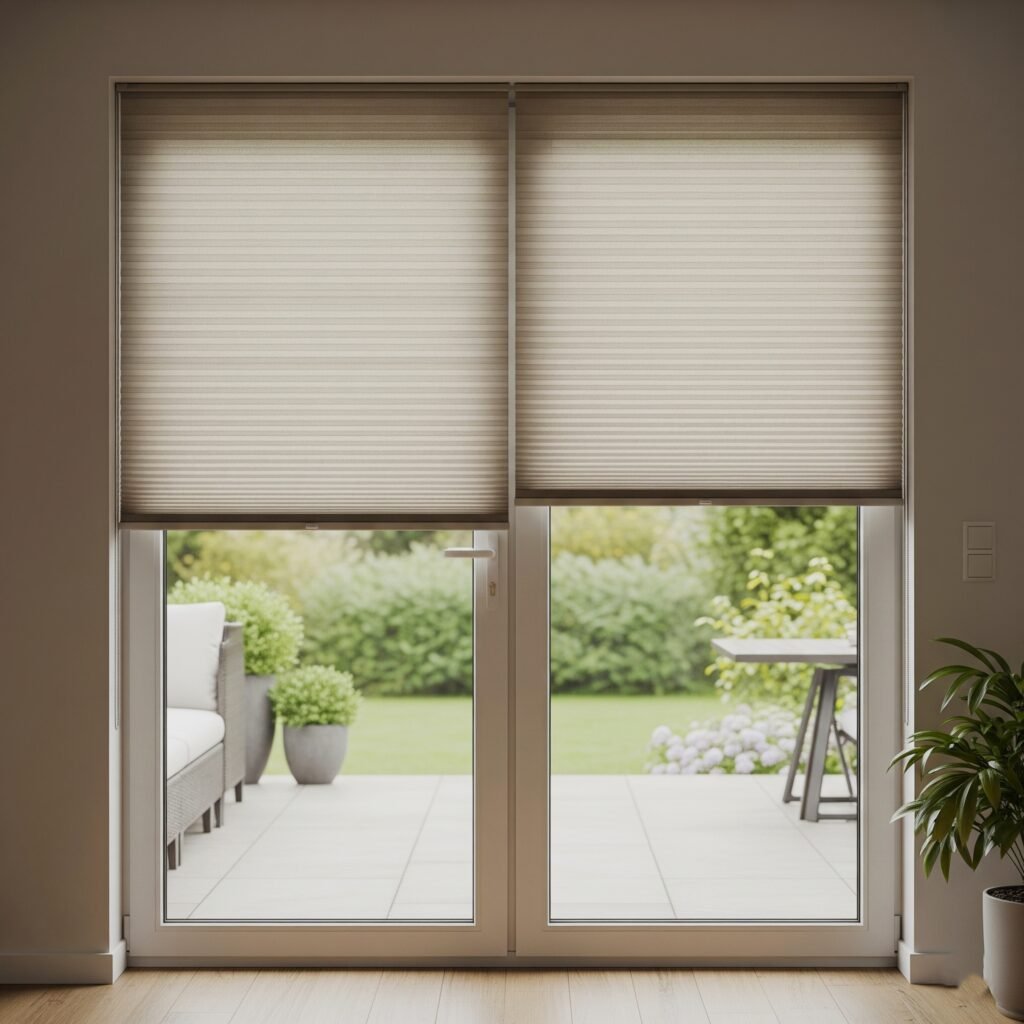
14. Cordless Cellular Shades
Save yourself time no more dealing with cords. there s only so long you can pull at a crimped cord while yelling for The spring-loaded action is really clever – a soft tug activates the spring (well—actually the SHOCK CORD), and the shade glides easily to just the right spot. You will see and have a nice clean look right away. What you’re not seeing: dangling cords, chain pulls, and hardware that add a jumble to the sight lines.
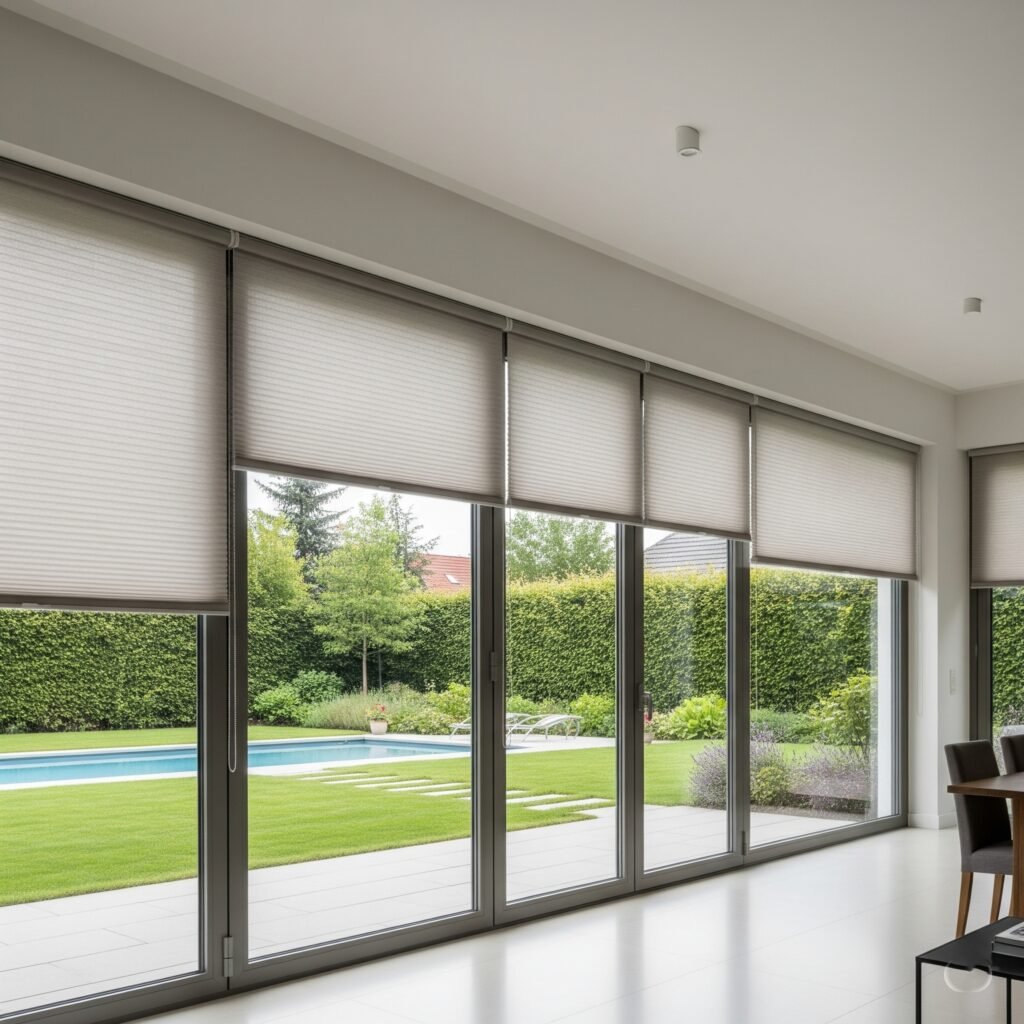
15. Arch and Specialty Shape Cellulars
Specialty-shaped cells are for those architectural features that give your home character but don’t work with standard window treatments. Gothic arch tops, slanting sides, and oddball proportions, these can all be had with custom manufacturing. I had a client that had these absolutely stunning arched patio doors that were the star of their great room.

Shutters and Sliding Panels
Smooth shutters are the Ferrari of window dressing patio doors. They’re definitely an investment, but they’re also the type of upgrade that just makes you feel good about your home when you look at them.
16. Plantation Shutters – Bi-fold Configuration
Plantation shutters on patio doors are one of those home-improvement upgrades that Richie now asks why he waited for. There’s something about the weight and feel and timelessness of them that just elevates whatever’s around them. It’s as if your house could put on a suit. Brilliant the way they fold completely out of the way when you want access to your patio!
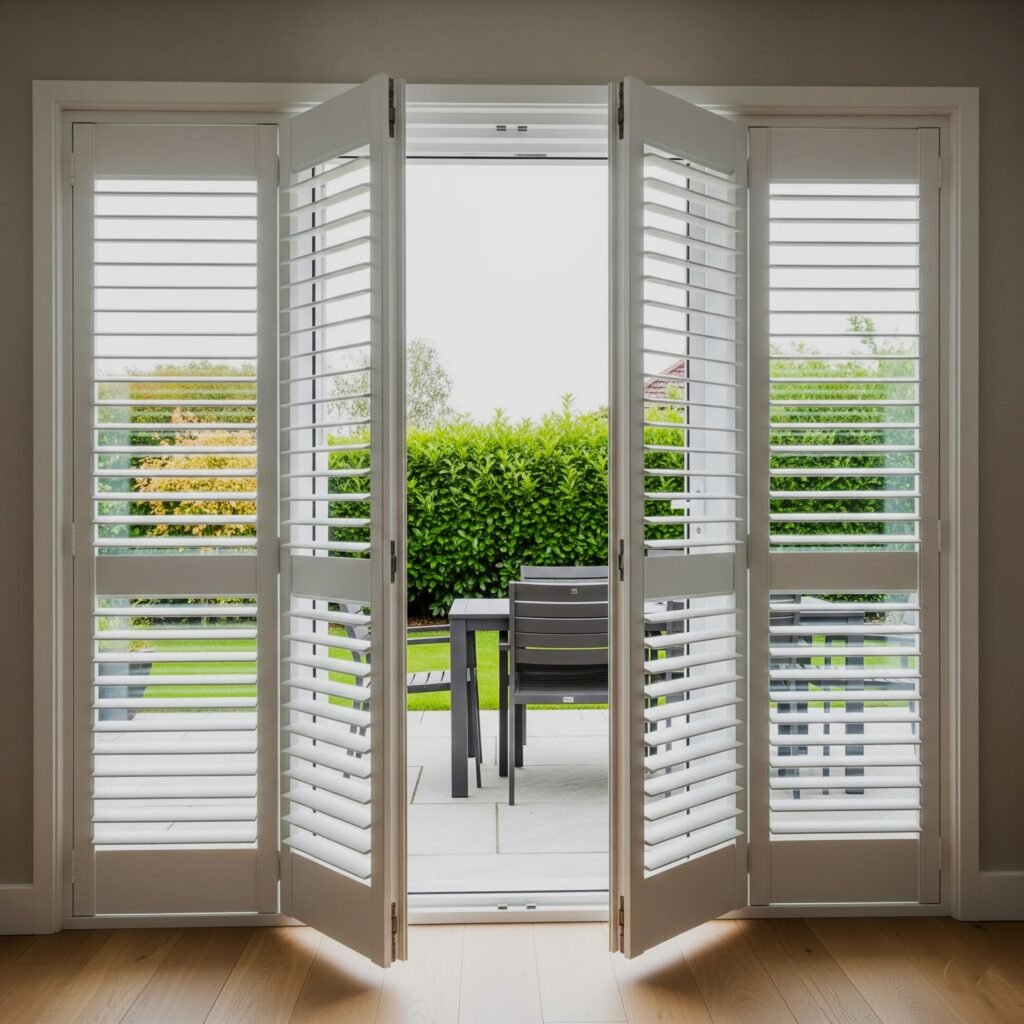
17. Sliding Shutter Panels
Sliding shutter panels All the refinement of plantation shutters with a modern approach that seems to flourish in wide openings. Instead of opening and closing like a book, the panels glide along tracks, an approach that can be more practical for very large doors or in tight spaces. The track system is designed to carry the weight of heavy shutter panels yet provides a smooth and quiet operation.

18. Café Style Shutters
Café style shutters are great when you want privacy at eye level but still want to be able to enjoy the bright and airy feeling that makes patio doors so popular. They span about the bottom half of your doors, leaving the top open for more light and a clear view. I installed these on a friend’s ground-floor patio after her neighbors started to take undue interest in her morning coffee ritual.
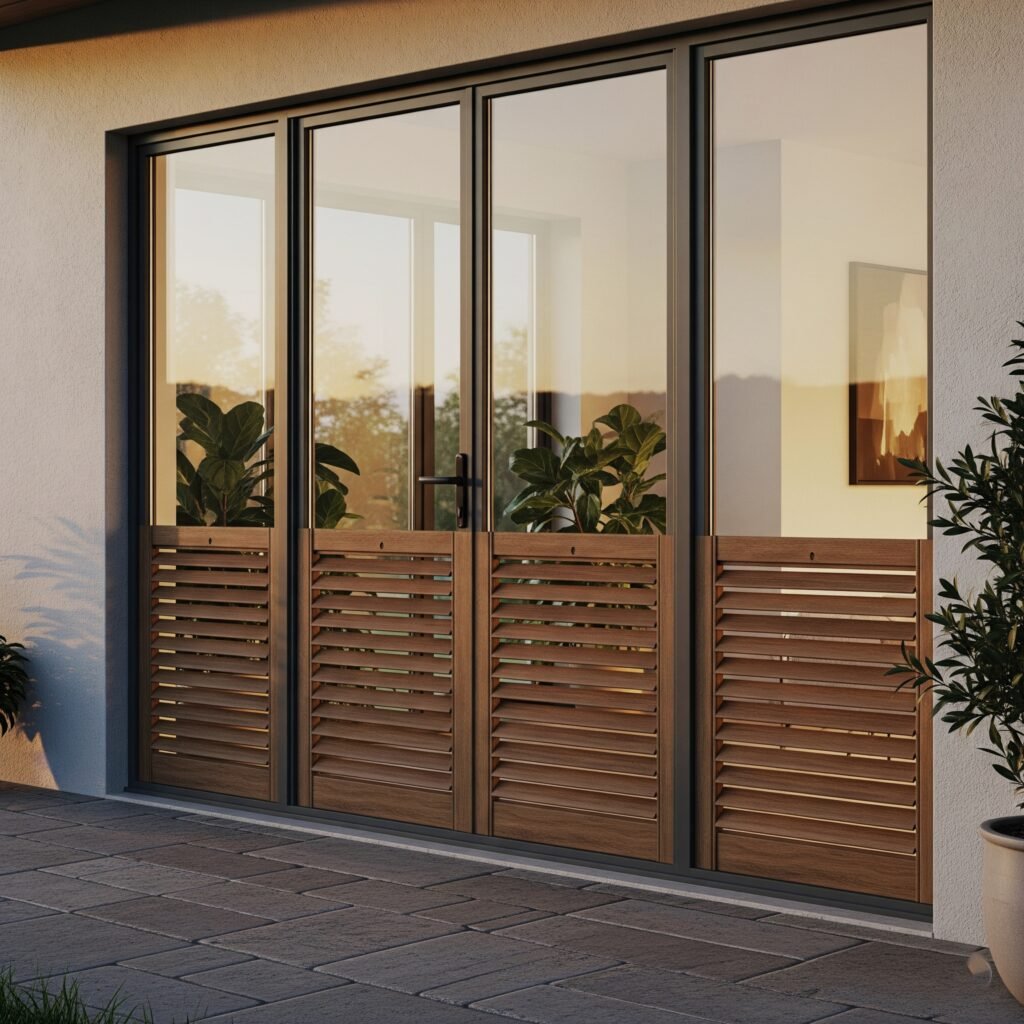
19. Composite Shutter Panels
Composite shutters are the solution when you are looking for the elegance of wood shutters but require something that can stand up to the rigors of a tough environment. Pool houses near the coast and in climates that are too damp those are the environments where composite will really shine! The material engineering is impressive.
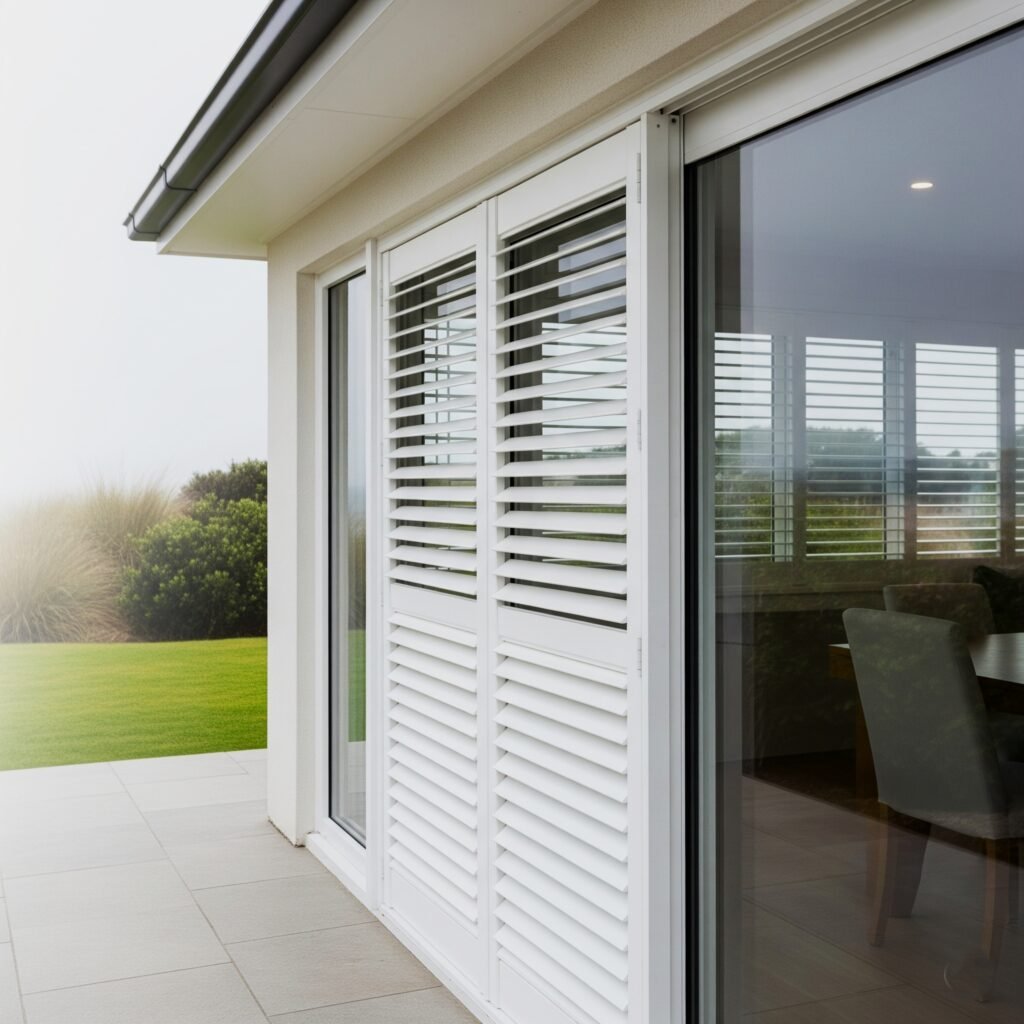
20. Motorized Sliding Shutters
Your existing wooden shutters are where classic charm meets modern luxury. For larger, heavier installations, motorization turns them from attractive but clumsy components of your home to automatic daily-use features that enhance you and your family’s lives.
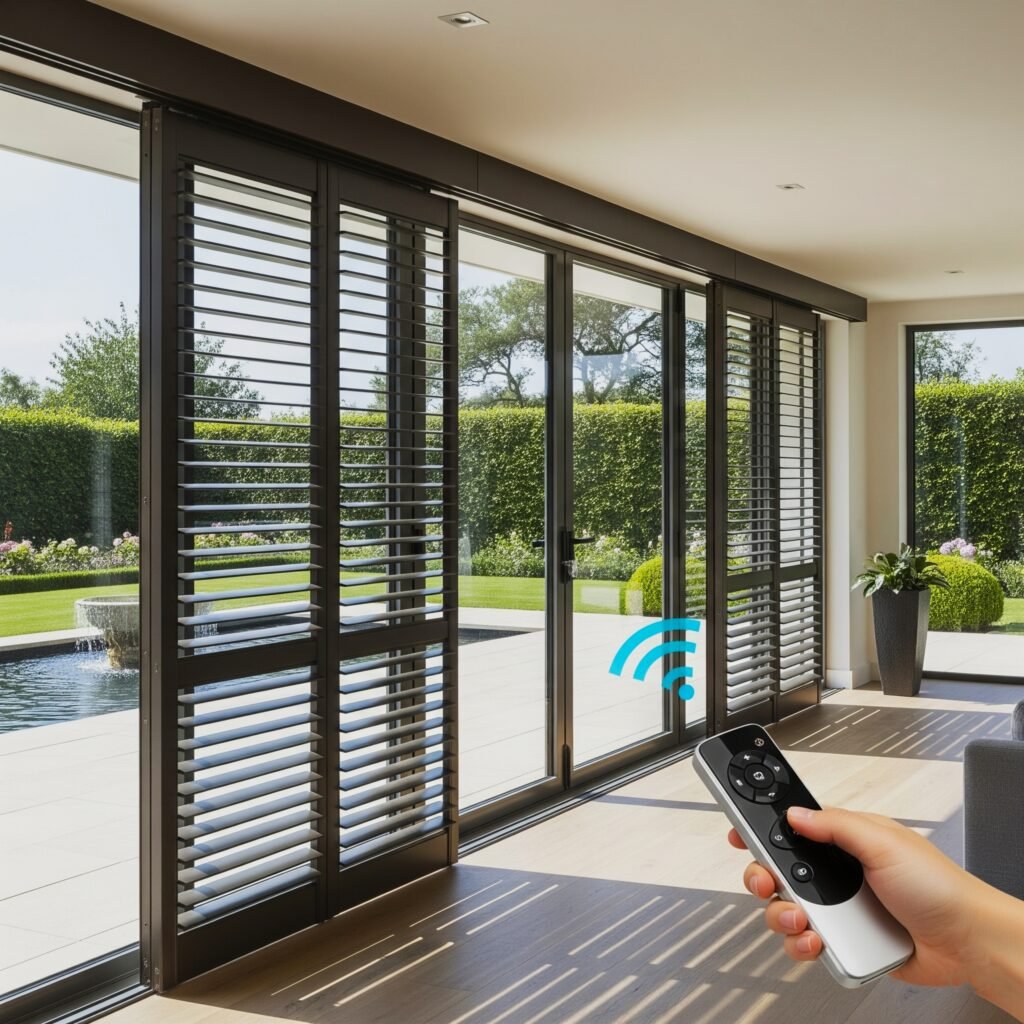
Drapery and Soft Treatments
Window hung drapery offers that special degree of insulation that is simply left out whenever hard treatments are installed. Also, taking the time to window-dress patio doors with good-looking fabric adds a sense of luxury, dignity, and grandeur that makes any room feel more fussed-about and expensive.
21. Custom Drapery Panels
It’s with custom drapery (see above) that window treatments cross the line from functional necessity to design statement. “We bring in the fabric collections, and seeing the fabric choices alone is an experience, whether it’s museum quality textiles or the latest performance fabrics.” I splurged on custom panels for my master bedroom, and they just brought the whole room alive.
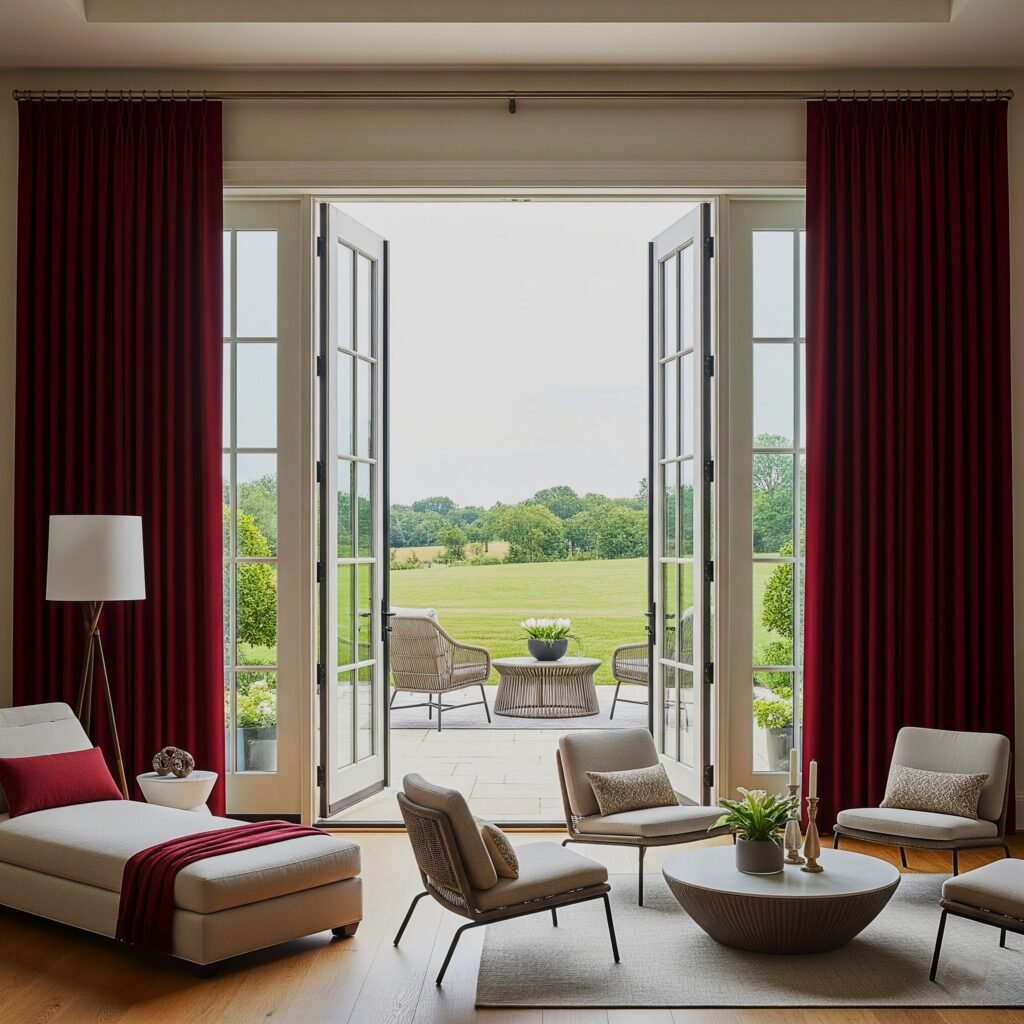
22. Pinch Pleat Drapery
Pinch Pleat Drapery. The magnificence of pinch pleat drapery is no doubt a sophisticated timelessness; it lends a formal spirit to any space. In fact, I find the pleats do provide a tailored, intentional appearance that I personally appreciate; I think it’s fitting in either traditional or transitional spaces. The pleats require an exact amount of fabric to form, and then the pleat is made with stitched down folds of the pleat.
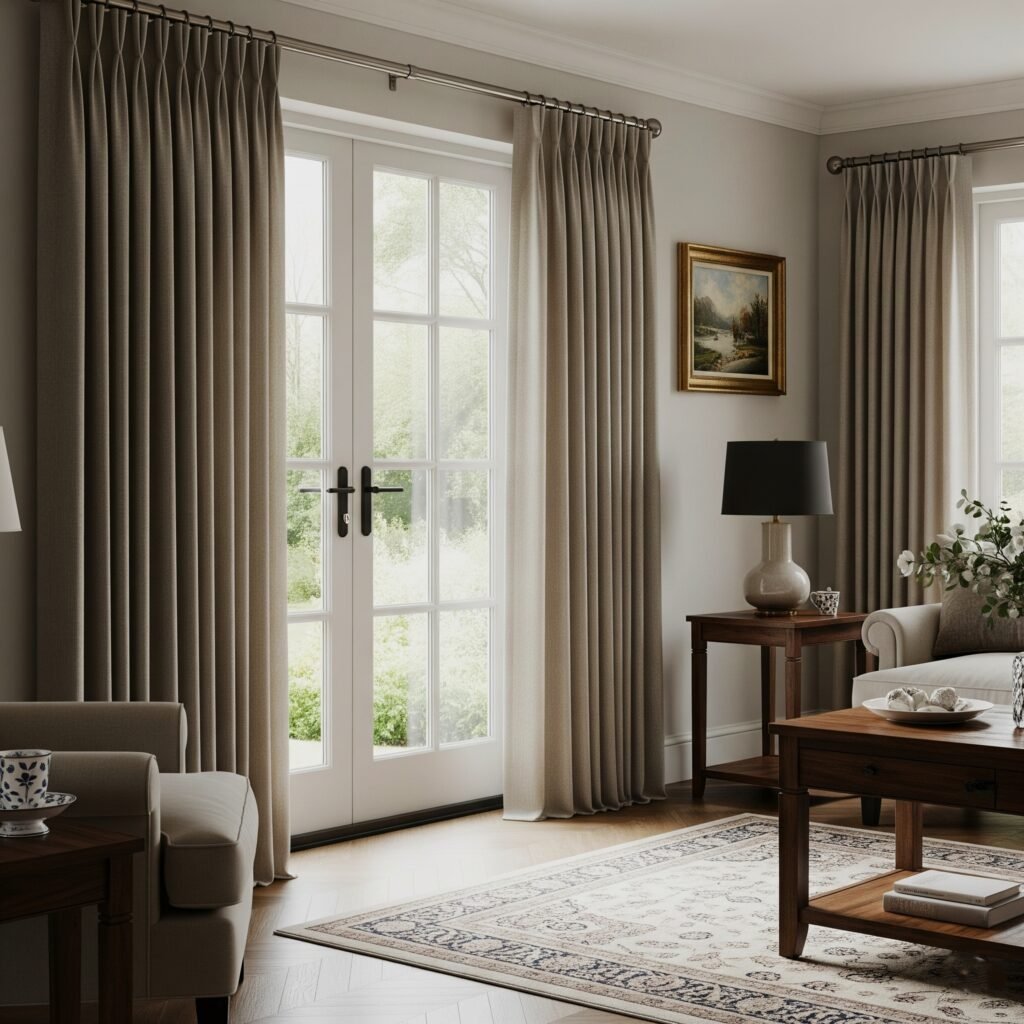
23. Grommet Top Panels
Grommets at the top add an easy, modern touch to a more relaxed and casual style than pleats. And those giant metal rings create these soft, undone waves that are loose and natural and have that vibe of approachable ease but that still look dang intentional and styled. The design couldn’t be any simpler; the rings simply roll right over decorative rods, and the process couldn’t be any more effortless when it comes time to open or close your curtains.
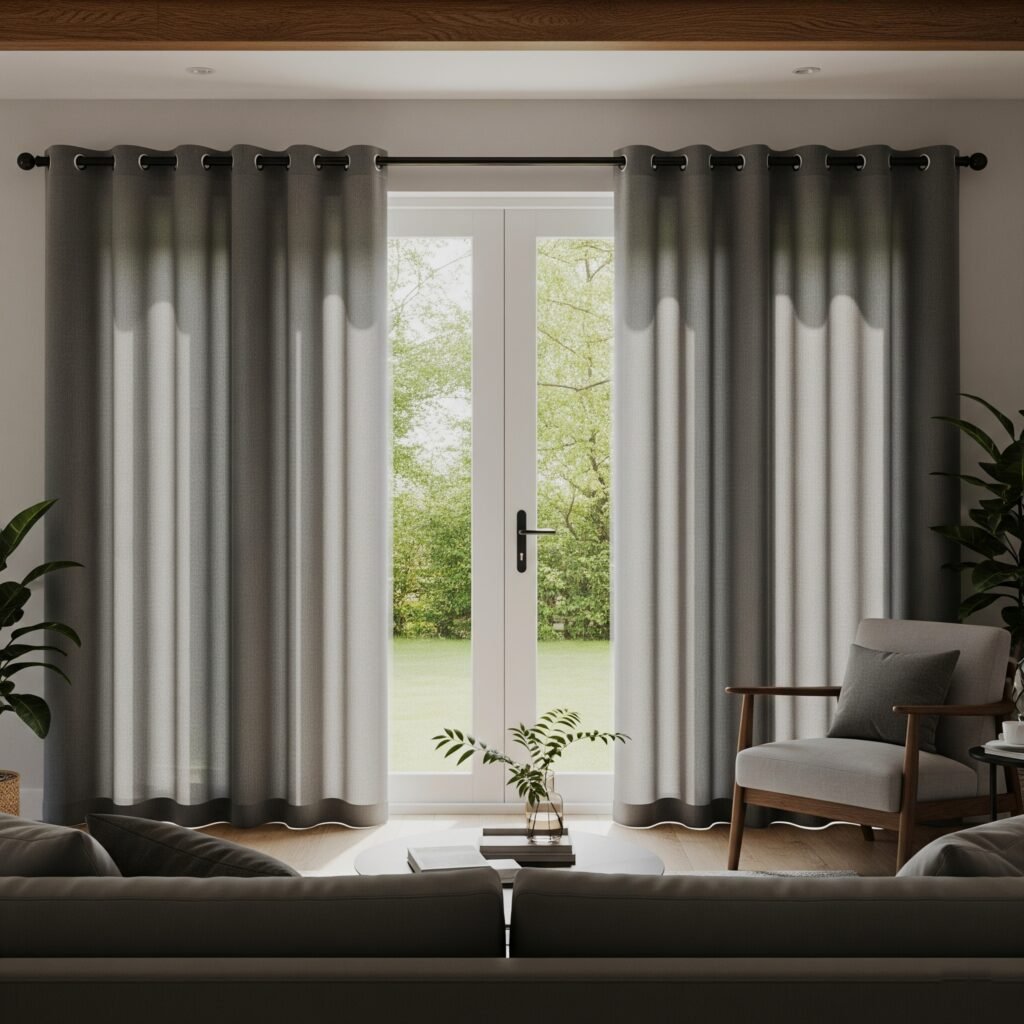
24. Layered Window Treatments
Layered treatments are when window dressing is elevated to an art form. With shades on shades (a sheer and a drape, or a cell and a panel, etc.), you get depth, dimension, flexibility, and a layered aesthetic that a single treatment can never achieve while still imbuing timeless, thoughtful style that is going to enrich any room in your home. The most popular approach is to install sheer or lightweight panels as close to the glass as possible and then use something heavier, such as drapery, on the outside.

25. Soft Roman Shades
Soft roman shades add fabric sophistication to patio doors in a more tailored form than flowing drapery. The soft horizontal folds on the front create a sleek profile that looks great in almost any interior design style. They’re considered “soft” because traditional roman shades have rigid horizontal supports, and instead you’ll find soft, uniform folds of fabric in these.
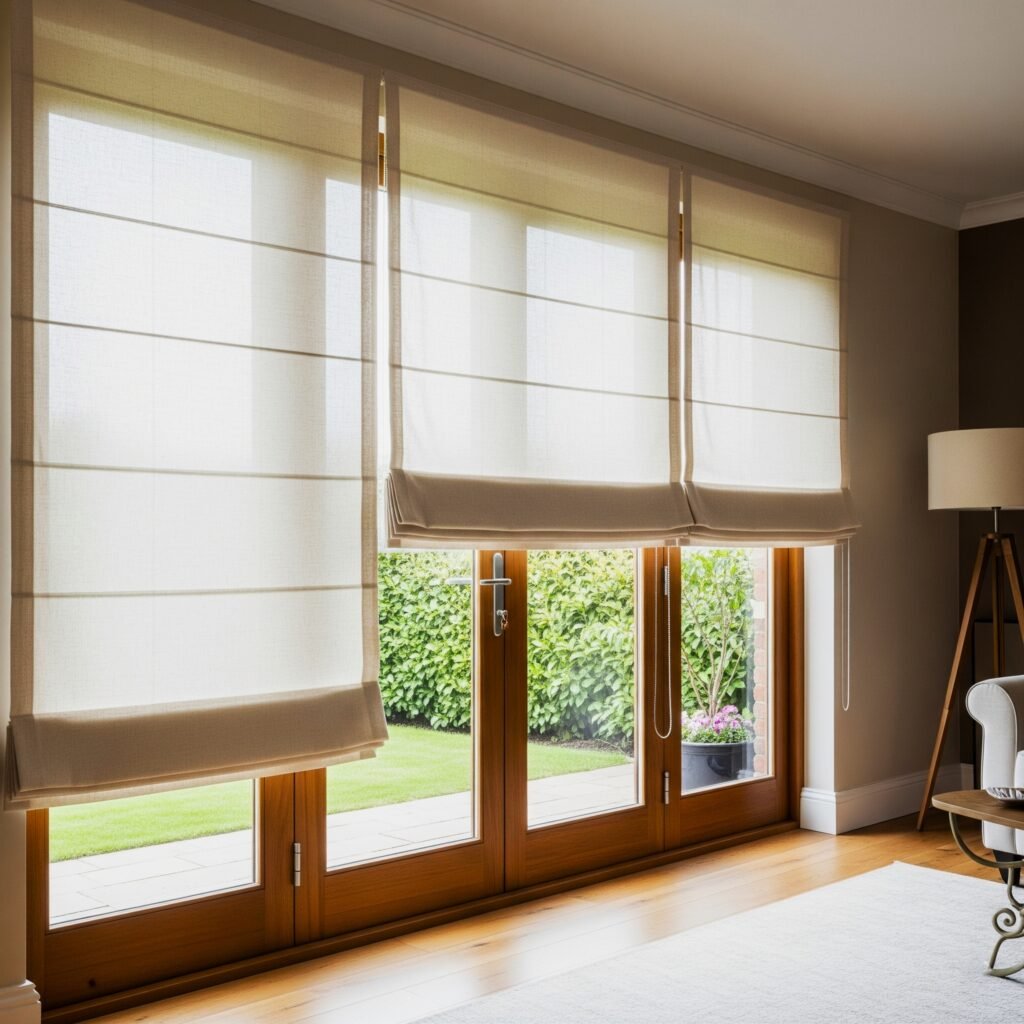
FAQs
Which is actually most handy for going in and out of those busy patio doors?
If your patio doors are like mine and are being used on an everyday basis, I’d actually stick with vertical blinds or panel track systems. Patio doors that get a lot of traffic themselves have to be both sturdy and low-maintenance. Vertical blinds can be fully stacked away, and children, pets, or opening and closing will not damage this type of blind.
How do I know if my doors are too wide for particular treatments?
I learned that lesson the hard way. Most standard treatments do a great job up to about 8 feet wide, but past that, you really start to encounter issues. oidonno1 I’ve done a sexy fabric roman on a 12ft window, and it was impossible to operate well too heavy, too difficult, and basically the mechanism couldn’t handle it.
Can I really do this myself, or should I phone for help?
It depends on what you’re willing to do and what you’re installing. I’m relatively handy and have successfully installed my own cellular shades, basic vertical blinds, and simple drapery panels in the past. The instructions have improved a ton over the years, and most of them come with all the hardware you need.
What is the best energy-saving option without blowing the budget?
Cellular shades, no contest. Even simple single-cell models can have a significant impact on room temperature as well as on energy bills. My neighbor put them on her enormous patio doors last summer and reported a roughly 20% reduction in cooling costs. That’s real money. Thermal curtains Even a good-fitting set of thermal curtains (not the best but warmer than a tank top) can make a noticeable difference. The thing is to make some kind of air barrier between the glass and your room.
